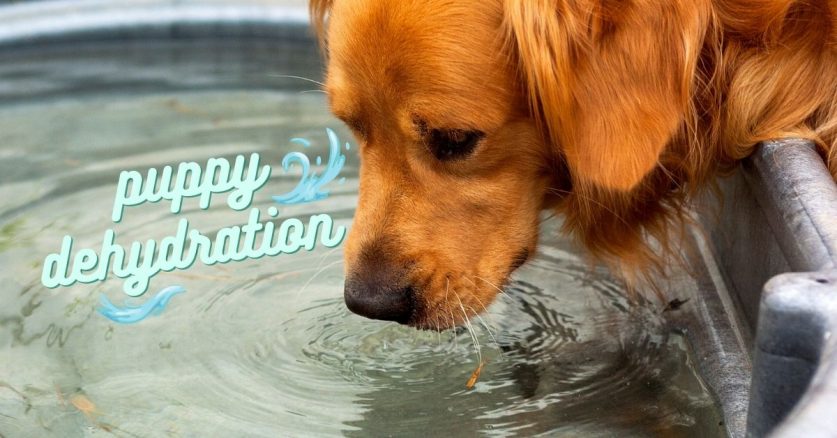
Signs & Causes of Puppy Dehydration
Posted Nov 30, 2021 in Puppies
Your dog can lose water through using the bathroom, exhalation, and panting. When your dog loses too much water or does not drink enough water, it could lead to them becoming dehydrated. Dehydration is when a dog’s body is in a state of water deficiency.
Puppies are typically more susceptible to dehydration as they have a lower body mass than adult dogs, meaning they can lose water much faster. Keeping your dog hydrated is vital to their health and happiness. It is especially important to keep your dog hydrated during the warmer months.
Dogs lose most of their bodies’ water due to urination or when they have diarrhea. These fluids are replaced when your dog eats or drinks. As mentioned, it is extremely vital to keep your dog hydrated when it is hot outside. When it is cold out, you should make sure your dog’s water is fresh and never frozen.
Causes of Dehydration
Most liquids are lost due to urination and your dog may be urinating excessively due to kidney disease, diabetes, or other diseases. If they are sick, are vomiting, or have diarrhea, your dog will lose a lot of its fluids. Similar to when humans are sick, if your puppy is sick, they need to stay hydrated. Keeping your dog well-fed and hydrated is a good way to keep dehydration from happening.
Signs of Dehydration
A common, easily detectable sign of dehydration is a dry mouth or sticky, stringy saliva in your dog.
Another detectable sign of dehydration is in your furry friend’s coat. Typically, your dog’s coat is fitted to their body with some room for movement, particularly around their shoulders. When grabbed, your dog’s skin should quickly move back into place as it has elasticity. If your dog’s skin moves back to its original place very slowly, they are starting to become dehydrated. If your dog is seriously dehydrated, its skin will not move back into place and will stay in the thick ridges you made with your hand.
Another good measure of dehydration that you can test is Capillary Refill Time (CRT). CRT is how quickly blood returns to your membranes after pressure is applied. Pushing against your dog’s tongue and watching how quickly color returns is a way to test your dog’s CRT. If your dog’s tongue automatically turns pink again, your pup should be well hydrated. If it takes longer than five or size seconds to return to the normal color, your dog is most likely extremely dehydrated.
Other noticeable signs of dehydration are sunken eyes, muscle twitches, dry nose, cold extremities, and reduced energy levels.
Treating Dehydration
If your dog is suffering from severe dehydration, you need to seek medical attention immediately. Your veterinarian might give them fluid therapy that they will do at the hospital or at your home. The purpose of fluid therapy would be to rehydrate your dog and refill their electrolytes.
In more mild cases, simply keeping your dog hydrated is a good way to combat dehydration. A vet might recommend another at-home way to refill their electrolytes.
If dehydration becomes a continuous issue, consult with your veterinarian to see what diagnoses and treatments are right for your puppy.